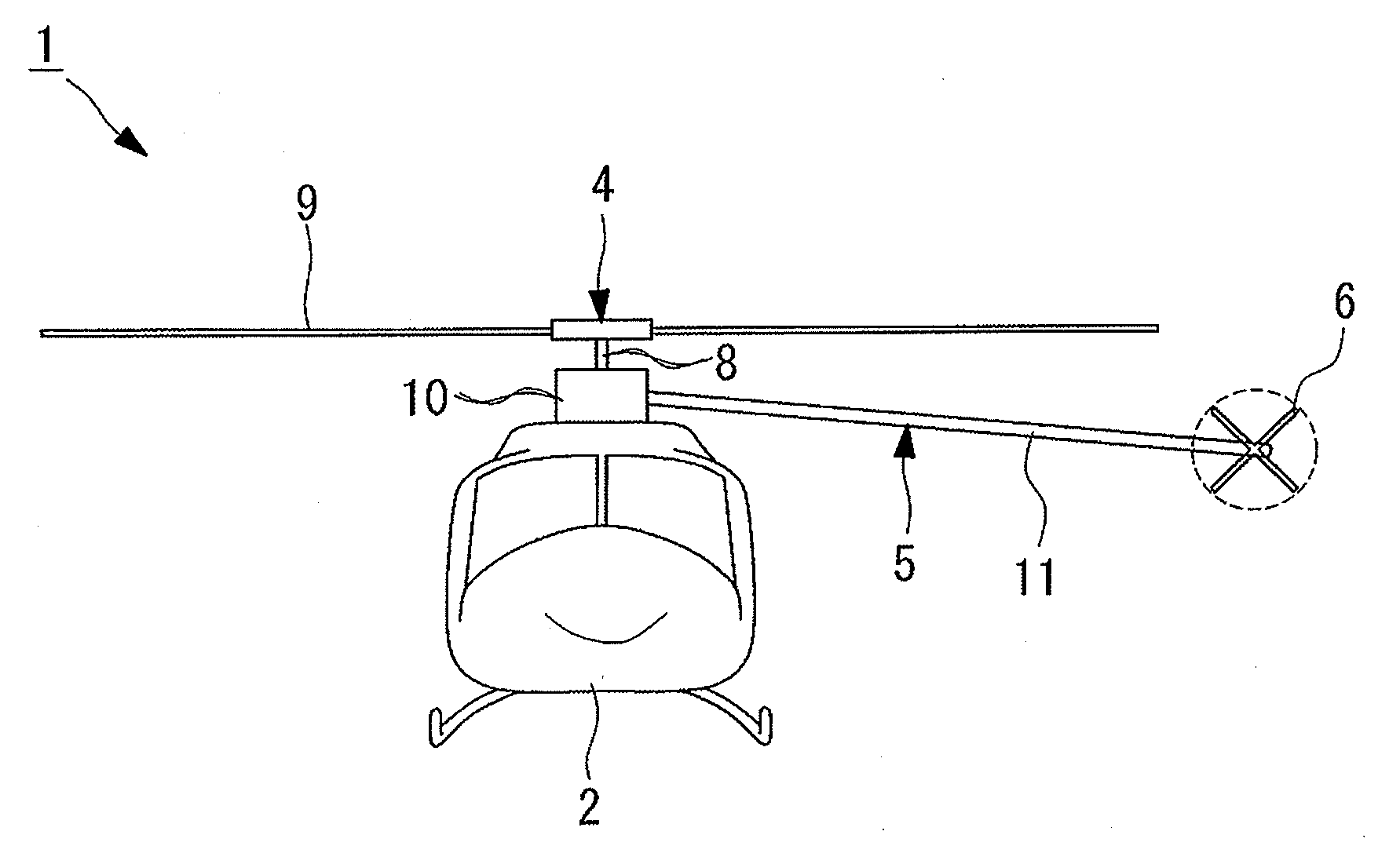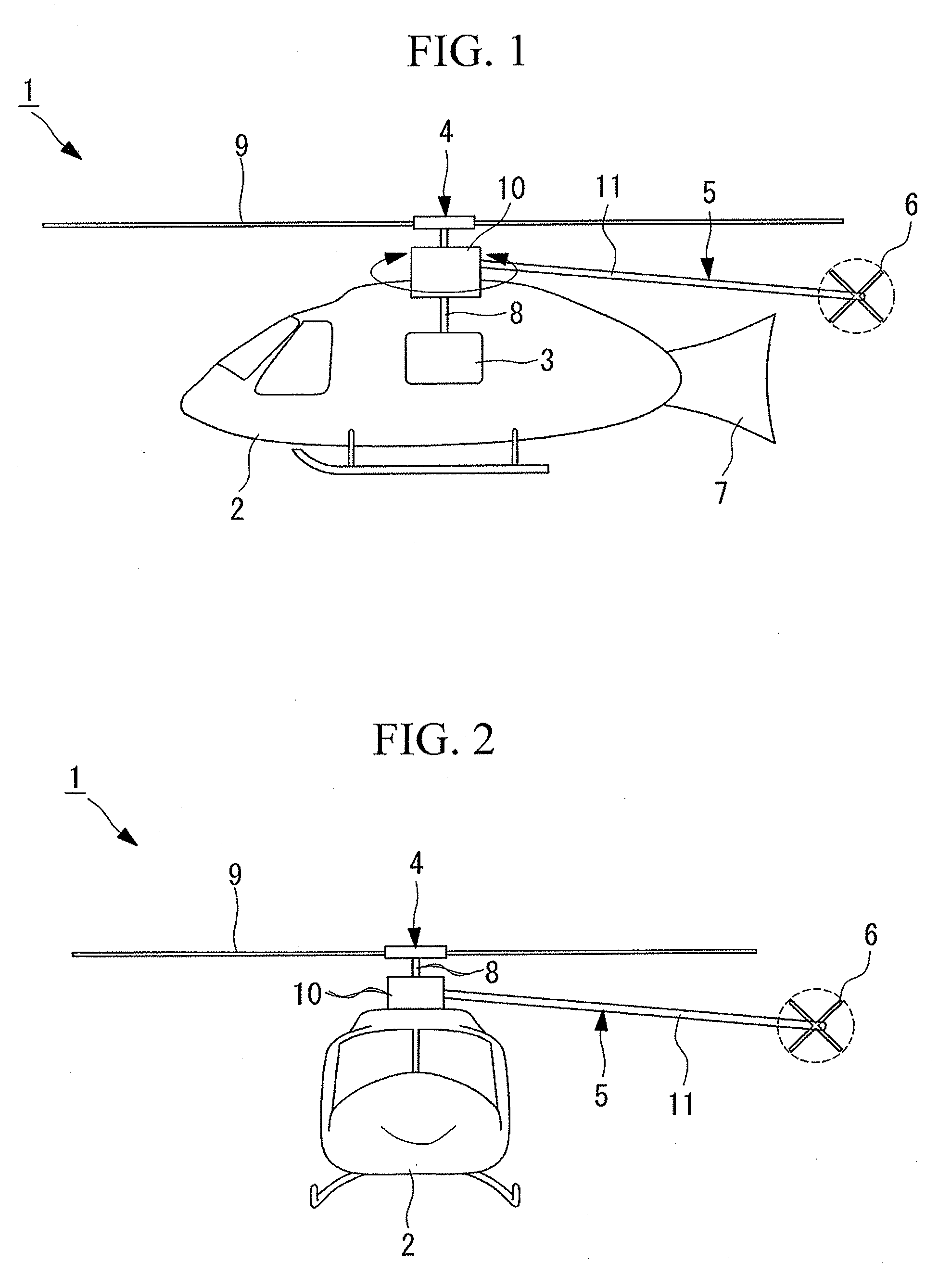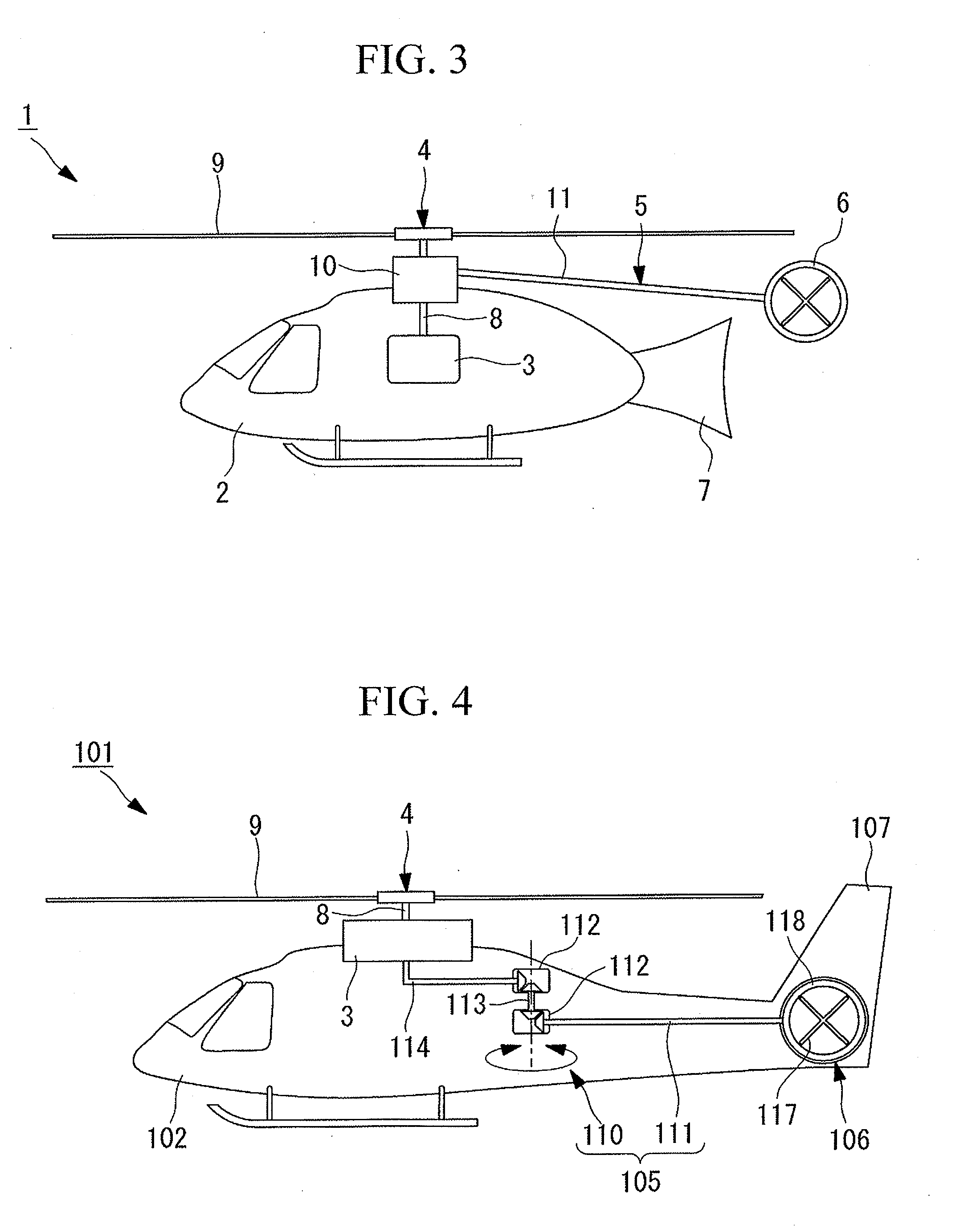Helicopter
a helicopter and propeller technology, applied in the field of helicopters, can solve the problems of increasing the noise in the cabin, the arrangement position of the propeller and the airframe, and the width of the helicopter is larger than the one in the cabin, so as to prevent the increase in the size of the airframe and achieve high-speed flight
- Summary
- Abstract
- Description
- Claims
- Application Information
AI Technical Summary
Benefits of technology
Problems solved by technology
Method used
Image
Examples
first embodiment
[0054]Referring to FIGS. 1 to 3, a helicopter according to a first embodiment of the present invention will be described below.
[0055]FIG. 1 is a side view for explaining the configuration of a helicopter according to this embodiment. FIG. 2 is a front view for explaining the configuration of the helicopter in FIG. 1, during high-speed flight.
[0056]A helicopter 1 of this embodiment is a helicopter that prevents an increase in size of an airframe and an increase in cabin noise, and also achieves high-speed flight.
[0057]As shown in FIGS. 1 and 2, the helicopter 1 includes an airframe 2 having a cabin or the like in which passengers sit, a main rotor 4 that is rotationally driven by an engine 3 disposed in the airframe 2, and a propeller 6 supported by a propeller supporting portion 5 so as to be rotatable.
[0058]As mentioned above, the airframe 2 has the cabin and the engine 3, and a vertical tail (tail) 7 extending substantially in the vertical direction (top-bottom direction in FIG. 1...
second embodiment
[0096]Now, referring to FIGS. 4 to 6, a second embodiment of the present invention will be described.
[0097]Although a helicopter according to this embodiment has the same basic configuration as that according to the first embodiment, it differs from that according to the first embodiment in the configuration of the propeller supporting portion. Therefore, in this embodiment, only the configuration in the vicinity of the propeller supporting portion will be described using FIGS. 4 to 6, and explanations of the other structures will be omitted.
[0098]FIG. 4 is a side view for explaining the configuration of the helicopter according to this embodiment. FIG. 5 is a front view for explaining the configuration of the helicopter in FIG. 4, during high-speed flight.
[0099]The components that are the same as those according to the first embodiment will be denoted by the same reference numerals, and explanations thereof will be omitted.
[0100]As shown in FIGS. 4 and 5, a helicopter 101 according...
third embodiment
[0134]Now, referring to FIG. 7, a third embodiment of the present invention will be described.
[0135]Although a helicopter according to this embodiment has the same basic configuration as that according to the first embodiment, it differs from that according to the first embodiment in the configuration of the propeller supporting portion. Therefore, in this embodiment, only the configuration in the vicinity of the propeller supporting portion will be described using FIG. 7, and explanations of the other structures will be omitted.
[0136]FIG. 7 is a front view for explaining the configuration of the helicopter according to this embodiment.
[0137]The components that are the same as those according to the first embodiment will be denoted by the same reference numerals, and explanations thereof will be omitted.
[0138]As shown in FIG. 7, a helicopter 201 according to this embodiment includes an airframe 2 having a cabin or the like in which passengers sit, a main rotor 4 that is rotationally...
PUM
 Login to View More
Login to View More Abstract
Description
Claims
Application Information
 Login to View More
Login to View More - R&D
- Intellectual Property
- Life Sciences
- Materials
- Tech Scout
- Unparalleled Data Quality
- Higher Quality Content
- 60% Fewer Hallucinations
Browse by: Latest US Patents, China's latest patents, Technical Efficacy Thesaurus, Application Domain, Technology Topic, Popular Technical Reports.
© 2025 PatSnap. All rights reserved.Legal|Privacy policy|Modern Slavery Act Transparency Statement|Sitemap|About US| Contact US: help@patsnap.com



